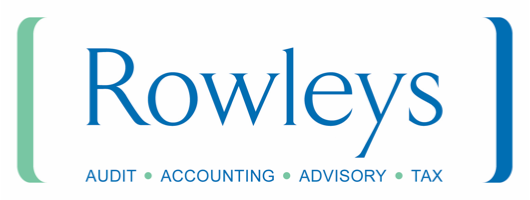News & Events
Research & Development (R&D): Forthcoming changes
17th January 2024
Change is on the horizon for Research and Development (R&D) tax credits. With the R&D Merged Scheme, set to kick in from April 2024, promising a simpler, more consolidated process. Other changes include the introduction of the R&D Intensive Scheme, along with changes in R&D tax credits for overseas subcontractors. In this article, Rowleys Corporate Tax Assistant Manager Emily Smith shares more about the expected R&D changes and the implications for businesses.
R&D Merged Scheme
The R&D Merged Scheme represents a concerted effort by the government to simplify and streamline the existing R&D tax credit framework. By amalgamating key elements from the current Small and Medium-sized Enterprises (SME) and Research and Development Expenditure Credit (RDEC) schemes, the aim is to create a more accessible and cohesive system for businesses.
Key Points of the R&D Merged Scheme include:
Legislation status:
The R&D Merged Scheme is currently in the anticipation phase, awaiting the introduction of draft legislation following the HMRC consultation in 2023. This legislative framework is expected to provide comprehensive guidance on the application and functioning of the new scheme.
Qualifying expenditure categories:
The new scheme will retain the familiar categories for qualifying expenditure, including staff costs, consumables, software, and subcontracting costs. This continuity ensures that businesses can seamlessly transition into the merged scheme without a significant overhaul of their record-keeping processes. This is potentially great news for existing RDEC claimants who are expected to be able to claim all subcontracting costs, rather than limited to just individuals and qualifying bodies under the current scheme.
Tax Credit Rate:
A pivotal aspect of the R&D Merged Scheme is the application of a flat 20% tax credit rate, aligning with the current RDEC rate. However, it is noteworthy that the tax credit will be subject to a notional tax rate of 25% or 19% for loss making companies.
The introduction of the R&D Merged Scheme is poised to have far-reaching implications for businesses involved in R&D activities. The amalgamation of key features from existing schemes into a unified framework is expected to simplify the claiming process, reduce administrative burden, and encourage more businesses to utilise R&D tax credits.
The R&D Intensive Scheme
In recognition of the unique challenges faced by Small and Medium-sized Enterprises (SMEs) with the impending R&D Merged Scheme, the government, in line with the March 2023 budget, has introduced an additional initiative — the R&D Intensive Scheme.
Set to take effect for expenditure on or after 1st April 2023, this scheme is tailored to specifically benefit SMEs with a significant focus on research and development activities.
A notable feature of the R&D Intensive Scheme is the R&D intensity ratio of 40%, reducing to 30% for accounting periods commencing on or after 1st April 2024. This ratio is calculated by dividing the total R&D qualifying expenditure by the total expenditure eligible for Corporation Tax (CT) deductions, providing a nuanced metric to determine a company’s commitment to intensive R&D endeavours.
The R&D Intensive Scheme retains the current SME scheme benefits with an additional deduction rate of 86% (on top of the 100% tax deduction for R&D expenses) and a payable credit rate of 14.5%.
As businesses navigate the evolving landscape of R&D tax incentives, the introduction of the R&D Intensive Scheme serves as a strategic move to address the unique needs of SMEs, ensuring that the benefits of these schemes are accessible and tailored to their innovative pursuits.
Changes in R&D tax credits for overseas subcontractors
In an era marked by global collaborations and interconnected economies, the forthcoming changes to Research and Development (R&D) tax credits recognise the importance of international partnerships while introducing a refined approach to overseas subcontracting.
Although not explicitly addressed in the Autumn Statement, a pivotal modification is set to take effect from 1st April 2024, reshaping how businesses can claim R&D tax credits for costs associated with overseas subcontractors.
Under this impending change, costs linked to overseas subcontractors will face restrictions in claims, signalling a shift in the approach to these expenditures. The government’s aim is to ensure that the benefits of R&D tax credits remain closely tied to activities conducted within the UK, aligning with the overarching goal of fostering innovation domestically.
However, it’s crucial to note that certain exemptions will be in place for businesses engaging in activities that are genuinely unavailable in the UK. Instances where regulatory approval is specifically required in another country, where the expertise in a particular subject matter is exclusively based overseas, or other conditions that cannot be replicated in the UK will be considered exceptions. This approach acknowledges the diverse nature of R&D endeavours, allowing businesses to navigate global complexities while still benefiting from R&D tax credits, provided their overseas engagements meet the specified criteria.
As businesses prepare for the implementation of these changes from 1st April 2024, a strategic evaluation of international collaborations and subcontracting activities will become imperative. By understanding the conditions for exemptions, businesses can optimise their R&D tax credit claims while continuing to thrive in a global landscape.
In conclusion, the forthcoming changes in Research and Development (R&D) tax credits mark a significant evolution in the landscape. While these changes are introduced with the hope that they will bring stability, it’s crucial to acknowledge ongoing concerns about system abuse. HMRC’s commitment to addressing such issues underscores the necessity for businesses to maintain compliance and integrity in their R&D tax credit claims. As consultations on these changes are now closed, the business community awaits the implementation of these measures and the potential for a more robust and abuse-resistant R&D tax credit framework.
For more information on how the forthcoming changes are likely to impact your R&D tax claims, please get in touch to speak to one of our friendly team.
